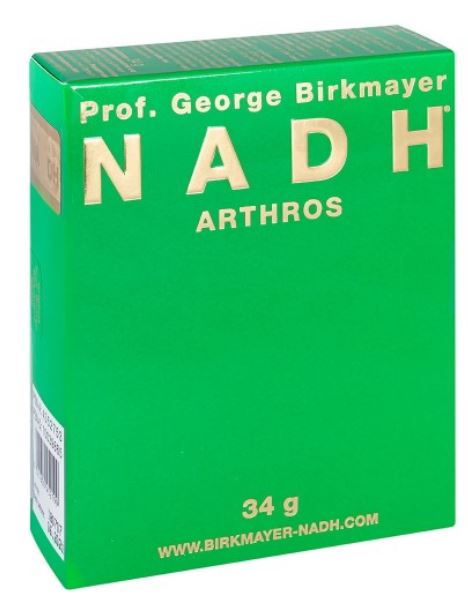Arthritis is a highly common and indiscriminate ailment. It may mostly afflict older people, yet it’s so widespread complaint that it’s estimated, by the year 2040, 78 million people in the USA alone will suffer with arthritis. At first, this figure may sound rather remarkable, but then, when one considers just how common arthritis is in society, it becomes less outlandish; more very plausible.
All the more reason, then, whether you live in the United States or the UK (or, indeed, anywhere else) to be aware of just exactly what arthritis is, how to best treat it and how, if possible, prevent it occurring in the first place.
What is arthritis?
Not actually a single ailment, arthritis has up to 100 specific types, all of which come with differing manifestations and symptoms. In simple terms, though, arthritis occurs when someone experiences joint inflammation or joint disease; therefore, it tends to affect large joints in the body’s extremities – especially hands, wrists, fingers, knees, hips and ankles.
Without doubt, experiencing arthritis in the hands is common for a great number of sufferers, causing the likes of swelling, pain, stiffness and a limited amount of motion in the joints of the wrists and fingers. On the one hand, flare-ups in the hand can be very regular; on the other, people can go weeks a time between them.
Worse, though, sufferers can experience chronic arthritis in the hands, which makes even simple tasks difficult to complete; unfortunately, it doesn’t just affect the joints between bones, but also the cartilage that covers the surface of any bones near a joint, as well as the ligaments and tendons that connect and support the hand’s bones.
The different forms of arthritis that can affect your hands include:
- Osteoarthritis – the most common form, this chronic condition sees the cartilage at your joints degrade and break down, ensuring your bones rub against each other, thereby causing stiffness, pain and movement-loss
- Rheumatoid arthritis – a chronic inflammatory condition that occurs when the body’s immune system unnecessarily attacks the synovium membrane, which lines the hand’s joints; symptoms tend to be pain, swelling, inflammation, loss of function and even malformation of the wrist and finger joints
- Juvenile arthritis – occurs in children and adolescents under the age of 16 and comes in different forms, resulting in pain and joint-swelling in the hands and wrists; it’s often precipitated by broken bones in the hands or by ligament and tendon damage in hands or wrists.
Arthritis treatments
Given its debilitating factor (i.e. symptoms only get worse in the long-term), arthritis is a disease that requires early detection for the best, most effective treatment. Many medical professionals tend to advocate aggressive treatment deployed in the early stages; indeed, you might well find such an expert referring to a ‘window of opportunity’ here – it’s often deemed to be within two years after the disease’s initial onset.
Now, while some arthritis treatments a sufferer may be recommended aren’t on the aggressive side (for instance, nonsteroidal anti-inflammatory drugs – or NSAIDs – to help ease pain and inflammation), oftentimes aggressive treatment is, as mentioned, the recommended way to go. In extreme cases, even surgery could be deemed necessary, in order to correct or alleviate critical issues, especially if arthritis is starting to result in serious restrictions to movements of a limb/ limbs and, therefore, quality of life.
Arthritis prevention
There may not necessarily be a fail-safe way to prevent developing arthritis, especially in later life, but there are definitely some things you can try. It’s also worth pointing out that arthritis is more likely to occur in women than men and could be hereditary; your genetics may well increase the likelihood of it happening. All the same, prevention’s strongly advised to try to keep it at bay and to reduce its potential severity in later years and, to that end, you might want to try the following activities:
- Try to keep to a healthy weight
- Don’t smoke/ quit smoking
- Take care in a labour-intensive job to avoid injury to your joints when lifting, pulling and pushing heavy objects
- Practice good posture, especially if you’re employed in a desk-bound job; consider using a special keyboard, a wrist cushion or a pad for keyboard-typing
- Take up hand exercises to strengthen your hands’ muscles, to relieve stiffness and pain and to increase synovial fluid-function in the cartilage between their joints
- Try to take breaks when doing strenuous or repetitive activities.

Arthritis prevention supplements
Additionally, you could attempt to accommodate all the above steps with trying out an arthritis-focused, high-quality and totally naturally-sourced supplement. Newly available from us, at The Finchley Clinic, is the latest in the long line of Professor George Birkmayer’s NADH supplements – namely, NADH Arthros (NADH for Arthritis).
If you’re yet to learn about – let alone try any of the – NADH supplements, you doubtless won’t be aware they’re very popular with our regular customers; NADH itself being the shortened version of nicotinamide adenine dinucleotide hydride, a co-factor of more than 1,000 different essential enzymes in the human body. In its excellent supplement form, here, NADH is a potent antioxidant, may boost energy levels and stamina, reduce fatigue, protect against dementia and may help to provide energy to the brain, nerves, muscles and the heart.
Moreover, NADH Arthros – this new, specialised supplement offering – delivers a combination of NADH with glucosamine, chondroitin sulphate and MSM (sulphur). Why? Because, when blended together, they may well contribute to the body keeping arthritis at bay. Indeed, the suppliers suggest you may well reap benefits if you take the supplement for up to four weeks; we would more conservatively suggest a regimen of NADH Arthros for two months is a better bet. However, unless our customers try it, we can’t be sure – so why not give it a try and let us know…?
